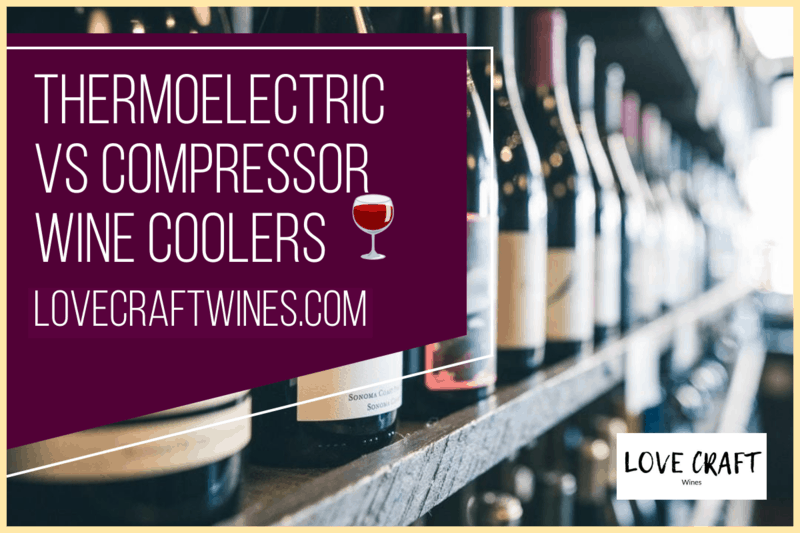In this article we’re going to be discussing the differences between a thermoelectric and compressor-powered wine fridge.
We see a lot of aspiring wine enthusiasts asking this question, and so we wanted to address it in a blog post.
Wine Coolers are one of the most essential wine accessories for wine connoisseurs.
There are two main wine cooling systems: Thermoelectric and Compressor. Both have their own advantages and disadvantages.
Therefore, without further ado, let’s get into comparing them both!
Table of Contents
Compressor vs Thermoelectric Unit
As we briefly mention above, there are two major technologies used in wine coolers today, thermoelectric and the compressor-based systems.
The former uses thermoelectric cooling technology to maintain the ideal temperature for your wine. It is a more energy efficient system. The reason for this is because it has a solid-state heat pump, which uses what’s known as the Peltier effect to create a ‘heat flux’ between two different types of materials.
The major difference between a thermoelectric wine cooler and a more commonly found, compressor wine cooler is that thermoelectric units have no moving parts and hence are inherently very quiet when operating.
The latter, on the other hand, is a brute force cooling system that uses a compressor and a condenser to keep your wine bottles cold. This system relies on coolant gas to carry heat from the inside of the fridge, to release it externally.
Advantages of a Compressor Wine Cooler
- These units are often cheaper to run
- They are more powerful than thermoelectric-powered units
- The temperature range capability is wider, so they’re more suitable for storing white wine, champagne and sparkling wines, especially for those who want their wine extra cold.
- They are best suited for larger sized wine coolers (anything over 25 bottles), hence why commercial units will use compressor-based cooling technology.
- If you’re looking for a dual zone wine fridge, you’ll generally find that most of them use a compressor cooling system
Disadvantages of a Compressor Wine Cooler
- When compared against thermoelectric units, compressor wine fridges are louder, as the system has internal moving parts.
- The unit’s initial cost is often more expensive than an equivalent thermoelectric unit
Advantages of a Thermoelectric Wine Cooler
- The cost of purchasing one is cheaper than a compressor unit
- They are very quiet due to having no moving parts, and therefore do not vibrate unlike some compressor units.
Disadvantages of a Compressor Wine Cooler
- The largest disadvantage is their lack of a cooling temperature range, as they generally aren’t able to reach lower temperatures than 50°F. Therefore they’re not necessarily suitable for storing certain types of wine or champagne.
- Due to being less powerful than an equivalent compressor-powered unit, thermoelectric systems are not commonly used in wine fridges which have a bottle capacity greater than 30 bottles… As they simply aren’t effective at cooling a large amount of internal space.
Which would we advise?
This entirely depends on a multitude of factors:
- What kind of wine you’re primarily looking to store in this unit? Since thermoelectric units have a more limited temperature range, those looking to their white wine in a very cold environment (sub 50°F) will need to choose a compressor-powered system.
- What size unit are you looking for? – Compressor units are best suited for storing larger amounts of wine (more than 30 bottles).
- Are slight noise/vibrations an issue? – Thermoelectric units operate the quietest.
- What’s your budget? – Thermoelectric wine refrigerators are often cheaper to purchase, but more expensive to run.
We hope that this guide helps you determine which unit is best for your needs and requirements. If you have any particular questions, leave them in the comments section below and we’ll get back to you ASAP.






